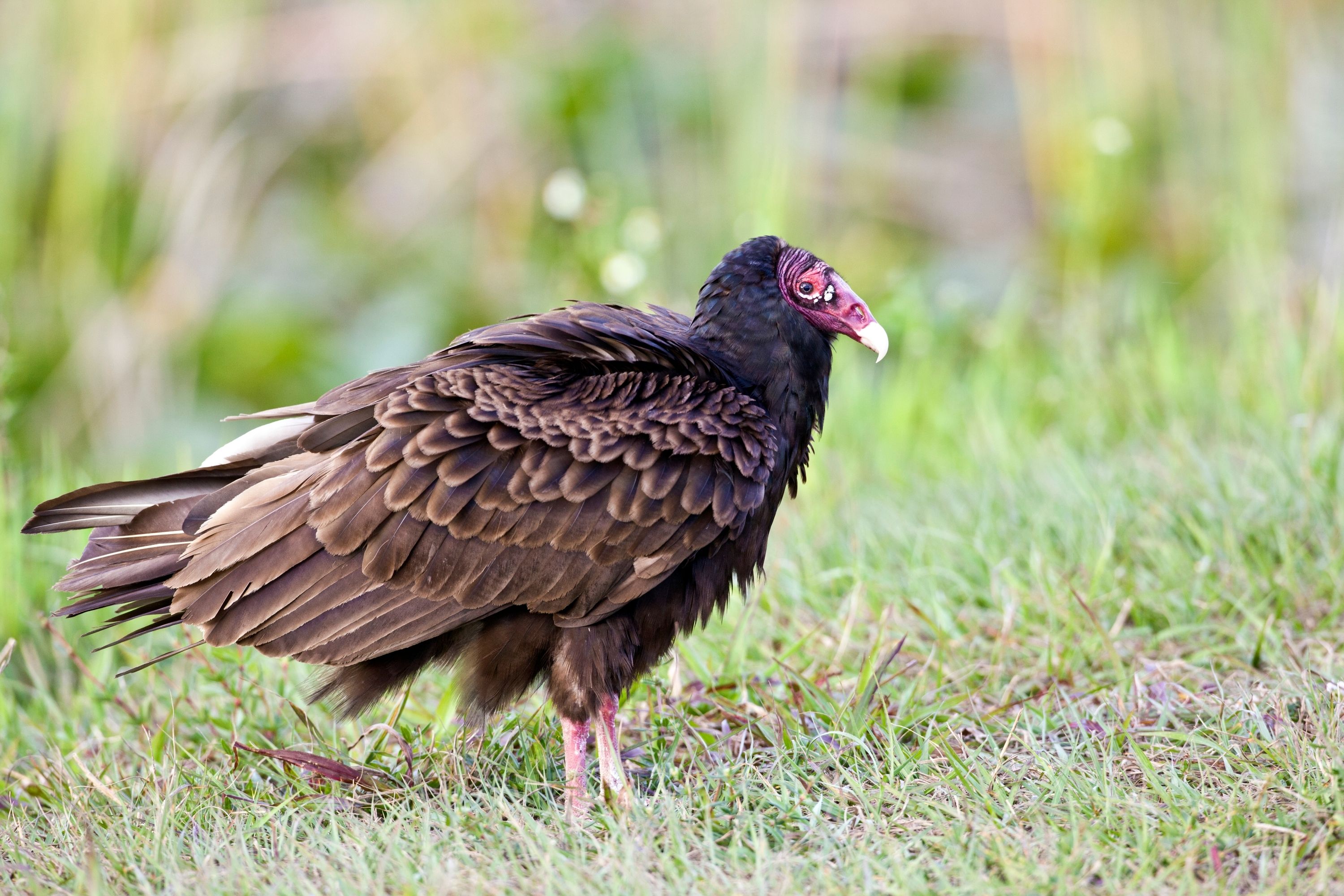Turkey vulture
(Cathartes aura)

Description
Cathartes aura, commonly known as the Turkey Vulture, is a large bird species found in North and South America. It is a scavenger bird that feeds on carrion and has distinctive features such as a bald red head, a hooked beak, and broad wings for soaring. In this article, we will explore the taxonomy, physical characteristics, behavior, habitat, diet, and conservation status of the Turkey Vulture. Taxonomy: The Turkey Vulture belongs to the family Cathartidae, which includes seven species of New World vultures. The genus Cathartes includes two species, the Turkey Vulture (Cathartes aura) and the Lesser Yellow-headed Vulture (Cathartes burrovianus). The Turkey Vulture is also known by other names such as the Turkey Buzzard or simply Vulture. Physical Characteristics: The Turkey Vulture is a large bird, measuring about 64-81 cm (25-32 in) in length and having a wingspan of 167-183 cm (66-72 in). It weighs around 1.4-2.7 kg (3-6 lbs) and has a distinctive appearance. The bird has a bald, red head that is wrinkled, and a hooked beak that is used to tear flesh. The bird's eyes are brown and have a very keen sense of sight. It has broad, long wings for soaring and a short tail. The Turkey Vulture has a blackish-brown body with feathers that have a silver sheen. The feathers are not waterproof, which prevents the bird from swimming or wading in water. The legs and feet of the Turkey Vulture are weak, and it lacks the ability to grasp prey with its talons like other raptors. Instead, it feeds on carrion by tearing off pieces of flesh using its hooked beak. Behavior: The Turkey Vulture is a social bird that is often seen in groups or roosts. It is known for its soaring ability and can glide effortlessly in the air for hours without flapping its wings. It uses its keen sense of smell to locate carrion, which can be detected from up to a mile away. The bird has a very strong stomach acid, which allows it to consume rotting flesh that would otherwise be harmful to other animals. During courtship, the Turkey Vulture performs a series of courtship displays, such as circling and soaring with other vultures. The male also offers food to the female as a sign of affection. The female lays one or two eggs in a nest made of sticks and leaves. Both parents share the responsibility of incubating the eggs and caring for the chicks. Habitat: The Turkey Vulture inhabits a variety of habitats, such as forests, grasslands, deserts, and coastal regions. It prefers open areas with a steady supply of carrion, such as roadkill or animal carcasses. The bird is found throughout the Americas, from southern Canada to Tierra del Fuego in South America. It can be seen in both rural and urban areas, including parks, farmlands, and landfills. Overall, the Turkey Vulture is a highly adaptable species that can thrive in a range of environments. Diet: The Turkey Vulture is a scavenger bird and feeds primarily on carrion, which includes the carcasses of mammals, birds, and reptiles. It is particularly attracted to carrion that has been dead for several days and has started to decompose. The bird uses its sharp, hooked beak to tear off pieces of flesh and then swallows them whole. The Turkey Vulture also feeds on garbage and has been known to scavenge at landfills. Because of its diet, the Turkey Vulture plays an important role in maintaining the balance of the ecosystem by removing dead animals and preventing the spread of disease. Conservation Status: The Turkey Vulture is listed as a species of Least Concern on the IUCN Red List, indicating that it is not currently at risk of extinction. The species has a large global population, and its range spans across a significant portion of North and South America. However, the bird does face some threats, including habitat loss, poisoning, and collisions with vehicles. Habitat loss occurs due to deforestation, agricultural expansion, and urbanization. Poisoning occurs when the bird feeds on carrion that has been contaminated by pesticides or other toxic substances. Collisions with vehicles happen when the bird feeds on roadkill and may be struck by passing cars. Overall, conservation efforts to protect the Turkey Vulture include preserving its habitat, educating the public on the importance of the species, and reducing the use of harmful pesticides.
Taxonomic tree:







